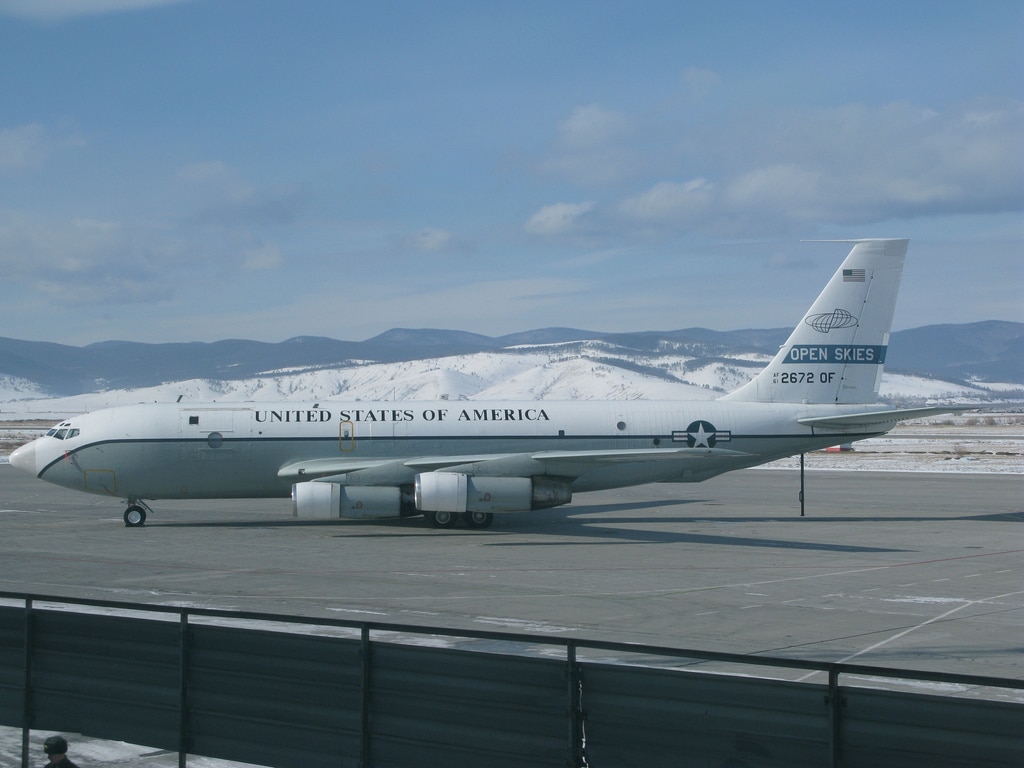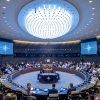
From time to time, United States’ foreign policy is put under strain, but the produced noise is never heard beyond Washington, D.C. In October 2019, Eliot Engel, Democrat representative for New York and House Foreign Affairs Committee chair, sent a letter to Robert O’Brien, National Security Adviser, in which he reported his concerns about reports and Donald Trump’s comments on the possible U.S. withdrawal from the Open Skies Treaty. Trump’s administration responded rapidly and denied the existence of current intents to withdraw from this post-Cold War agreement. Even though an important sector of the Republican Party is critical of the treaty, this controversy was diluted promptly. However, this issue arouses analysts and policymakers to ponder and look into which is the current landscape of international military cooperation in the aviation field.
The Open Skies Treaty was signed in 1992 and entered into force in 2002. Even if it is a novel treaty, the genesis of this agreement goes back to the year 1955, a period in which U.S. President, Dwight Eisenhower, proposed to the Soviet Union the principle of free mutual over-flights, accompanied by an exchange of photographs. Even if the final agreement was not made until 40 years later, the importance of this date indeed lies in the fact that both countries were mutually willing to undertake this type of oversight activities with regards to air security, at the height of the Cold War.
Unlike other military cooperation-related treaties whose objective is the reduction of existing weapons or the limitation of military capabilities building, the purpose of this treaty is to promote greater openness and transparency in their military activities, and to enhance security by means of confidence- and security-building measures. With the goal of fostering these principles, the treaty authorizes the conduct of observation flights using unarmed aircraft, equipped with agreed imaging devices, and sensors. Each State Party has at its disposal quotas to overfly other territories, and it is also assigned passive quotas –the number of overflights over its territory that it is required to accept. Once oversight action has been done, both countries –the observed and the observing– exchange all obtained information, and they offer it to the rest of State Parties.
However, despite good intentions of this first multilateral aerial observation regime, the treaty has received criticism by its instigators due to several reasons. First, there are doubts on the trustworthiness of aircrafts’ equipment. The treaty provides the type of equipment which is required. Nevertheless, it does not oblige Contracting Parties to report on new internal components which may lead to the improvement of this equipment; possible inspections are exclusively discretionary. An example of this reluctance was in September 2018, when the Russian Federation’s government announced that the United States had denied its authorization to allow a Russian aircraft to overfly U.S. territory. This was founded on doubts and rivalries over technological development level of sensors, such as optical panoramic and framing cameras, video cameras with real-time display, infra-red line-scanning devices, and sideways-looking synthetic aperture radar. It is said that these highly advanced devices may turn this traditionally military cooperation exercises into espionage missions.
Heightened tensions between the United States and Russia due to internal and interstate conflicts –such as the Ukrainian crisis from 2014– have also affected the full implementation of this treaty. In 2017, Russia restricted overflights to 500 kilometres within its territory to NATO Member States –and only the Western side of Russia. Furthermore, Russia also limited overflights over Kaliningrad, an area which is allegedly exposed to unusual military movements and possible nuclear energy storage facilities, according to several intelligence agencies.
Comparative advantage from commercial satellite imagery are other of the aspects which make the Open Skies treaty a less viable and effective regime. From a technical point of view, commercial satellites provide the same results, and are less costly in certain cases.
However, this treaty also offers genuine opportunities and new applications for emerging challenges. Consultative Commission of the Treaty –which meets regularly once a month– considers that this military cooperation would promote conflict resolution tools: for instance, by helping both India and Pakistan to solve their territorial dispute in Kashmir, or by enhancing dialogue between South Korea and North Korea in order to create confidence-building measures when undertaking joint oversight activities in the demilitarised zone. Another option set out has been the use of Open Skies Treaty for environmental protection, through imagery from aerial surveillance. Furthermore, another aspect of protection has been raised, such as the fight against transnational threats –arms and drug trafficking– or more sophisticated tracking systems for issues such as large-scale involuntary migration, and potential criminal groups’ interventions in these refugee flows.
In this vein, which is the future of this military cooperation regime whose cornerstone was the enhancement of transparency and mutual trust? Once two or more countries have agreed upon overflight activities, the application of this treaty cannot be cancelled in any case –and certainly not for reasons of National Security–, except when flight safety could be compromised. However, recent experience shows us that countries are more likely to take a defensive or exclusionary stance, which compromises not only treaty’s effectiveness but, most notably, the existence of mutual trust in the global security arena. It appears that the near-future U.S. decision –if any– cannot be taken unilaterally: as Deputy Secretary of State, John Sullivan, once said, any decision to withdraw would require the unanimous support of NATO, to make sure “we do not damage to our NATO alliance”.
Yet, it appears that the world still counts on alliances.


